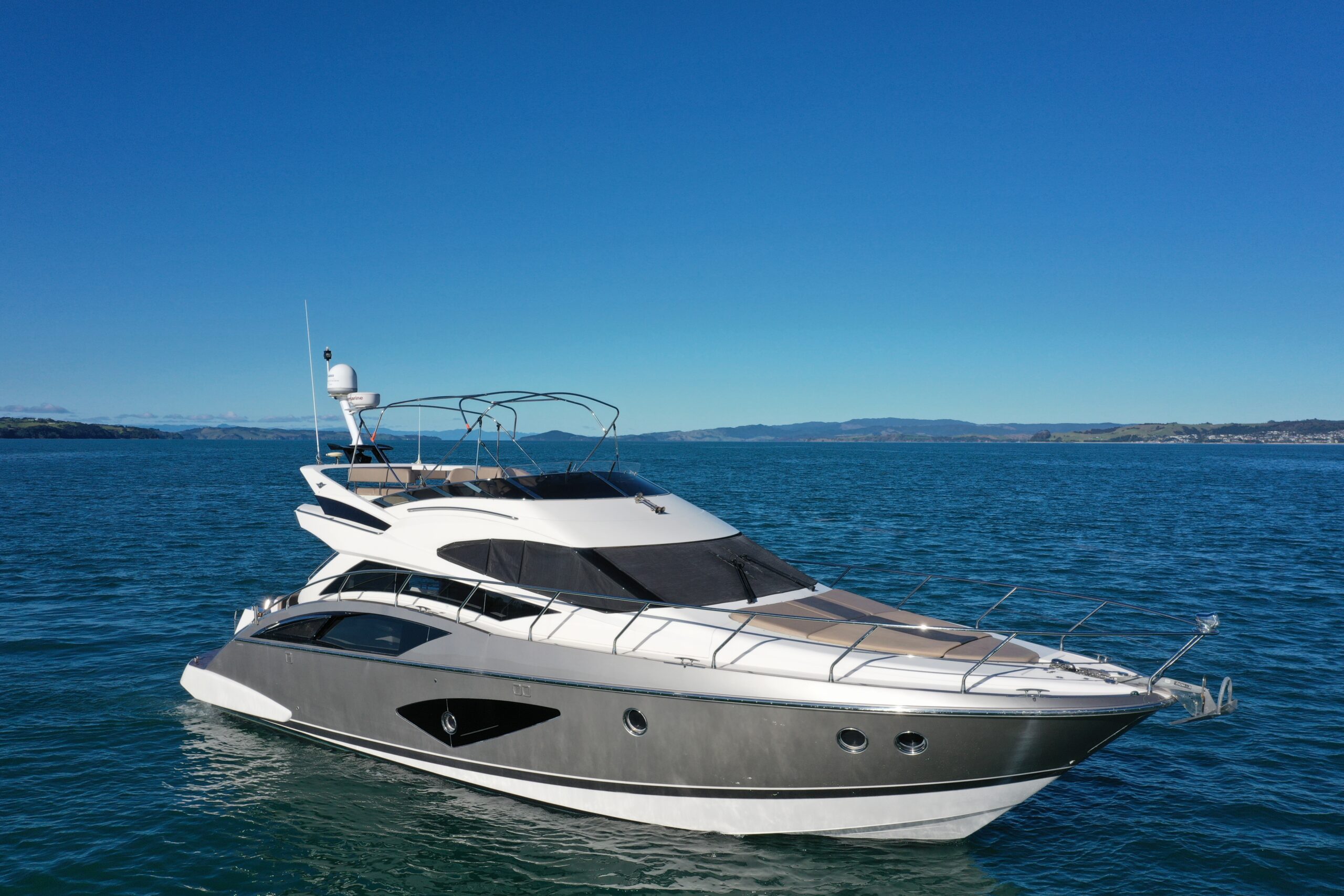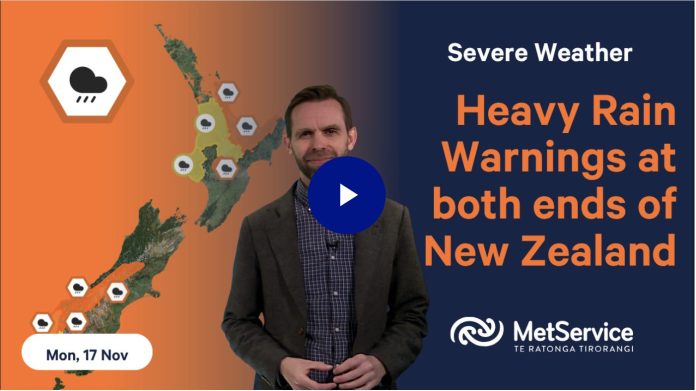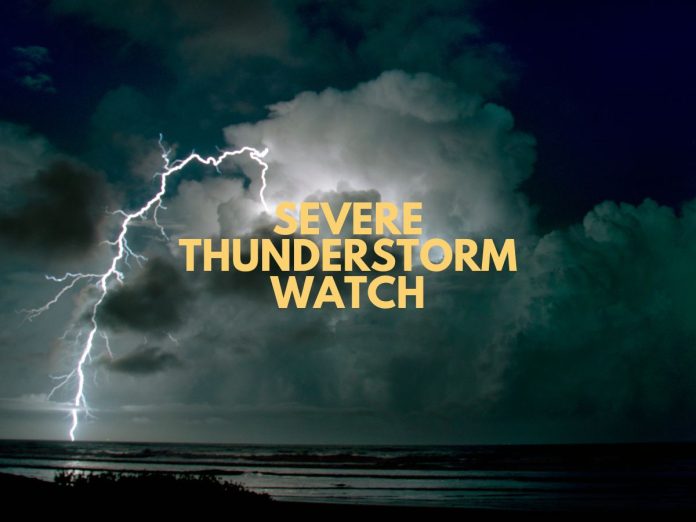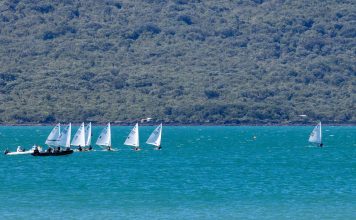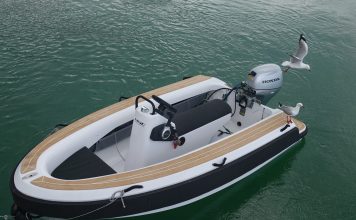North Island weather: downpours and dangerous winds
As of Tuesday 29 July, a deep and moisture-laden northeast flow is fuelling heavy rain and unstable atmospheric conditions across much of the North Island. Rainfall rates are expected to peak between 25–40mm/h in many regions, with embedded convection in the frontal system adding the risk of severe thunderstorms from Auckland to Bay of Plenty.
The Coromandel Peninsula is forecast to receive up to 130mm of rain by early Wednesday morning, while the Bay of Plenty could exceed 180mm, especially inland from Kawerau.
“Rainfall of this intensity can cause surface and flash flooding, especially in narrow valleys and stream catchments,” warned MetService in its latest alert.
Across Auckland, Northland, Coromandel and eastern Waikato, the risk extends to slips and sudden stream surges, with Strong Wind Watches in effect as northeast winds push towards severe gale strength in exposed areas. Driving conditions are expected to remain hazardous well into Wednesday morning.
South Island forecast: front followed by relief
While the North Island bears the brunt of today’s deluge, the upper and western South Island is also in the firing line. Orange Warnings for heavy rain are active across Westland, Tasman, Nelson, Marlborough, Canterbury headwaters and Otago’s alpine rivers.
Rainfall totals of up to 180mm are expected across the Taranaki Maunga, Otago Headwaters and southern main divide, with moderate risk of flooding and slips. However, by late Wednesday, this pattern will begin to shift.
A second front is expected to move north across the South Island, followed by a deep low pressure system forming to the east of New Zealand. This low will usher in a southerly change, bringing colder, showery air up the eastern North Island, while the South Island gradually comes under the protection of a ridge building in from the Tasman.
Coastal and marine conditions: avoid exposed waters
For boaties and coastal users, today’s marine conditions are dangerous in many parts of the country.
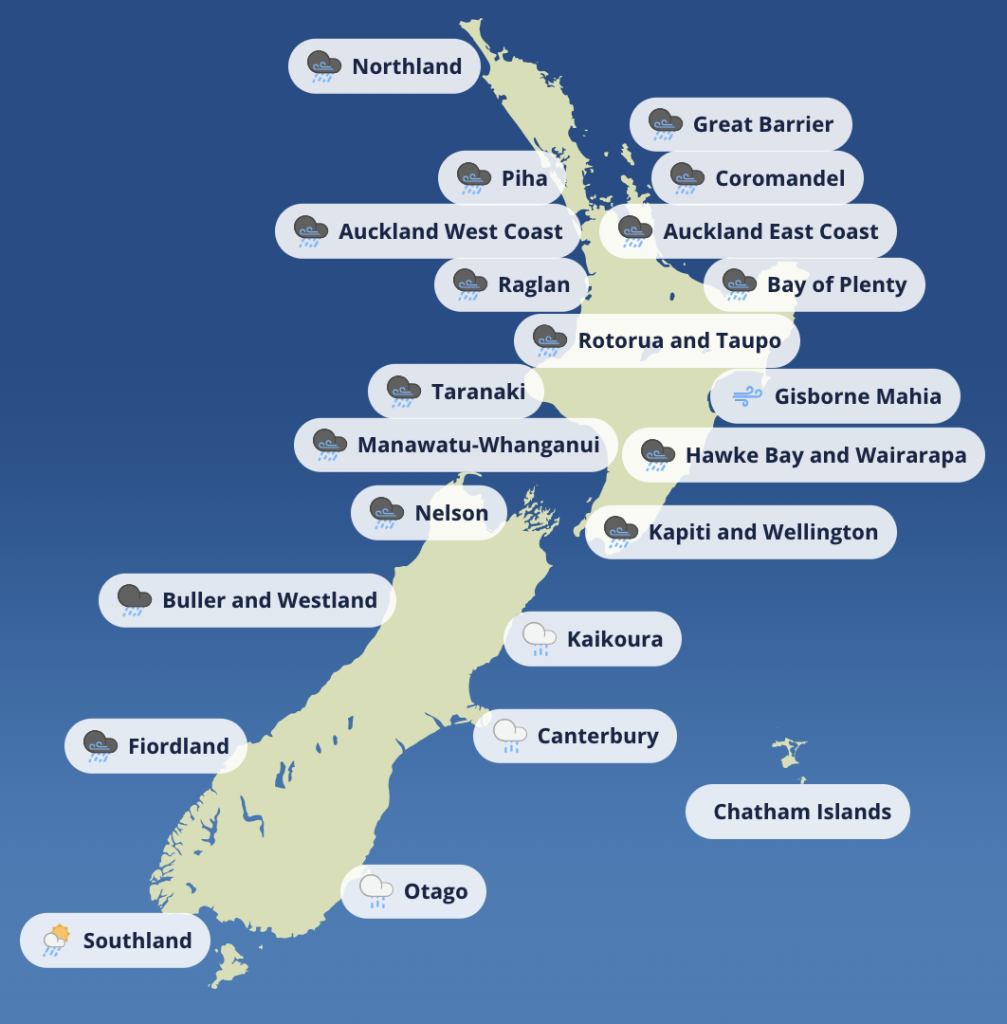
A combination of heavy rain, strong winds and reduced visibility is affecting exposed harbours and nearshore areas, particularly in:
-
Auckland and Hauraki Gulf
-
Bay of Plenty
-
Coromandel Peninsula
-
Northland’s east coast
These areas are experiencing heavy onshore rain bands, embedded convective cells, and significant run-off — making river bars unpredictable and inlets surge-prone.
Later this week, southerly winds will take hold, especially east of Gisborne and the Mahia Peninsula, as a deep low spins up in the east. At the same time, a stabilising ridge is expected to settle weather in southern and western waters.
“Ensure anchorage is secure, check deck drainage, and avoid coastal transits during peak rainfall or wind,” advises the Boating NZ team. “This isn’t a good week for marginal decision-making.”
Regional outlook: what to expect through Saturday
-
Wednesday (30 Jul): Rain and strong winds continue across the North Island; thunderstorm risk eases by night. Front clears the South Island.
-
Thursday (31 Jul): A strong southerly flow hits the eastern North Island; showery, colder air arrives. Two lows dominate offshore weather.
-
Friday (1 Aug): Rain tapers over the North Island; South Island stabilises under a broadening ridge.
-
Saturday (2 Aug): Calmer weather over much of the country as the ridge builds from the Tasman.
Final thoughts: prepare and monitor updates
Boaties, backcountry users, and regional authorities should remain on high alert. With many areas forecast to receive well above warning-level rain totals, and river levels likely to respond quickly, even short outings require extra planning.
For those living or boating in low-lying or flood-prone areas, it’s time to:
-
Clear drains and scuppers
-
Check mooring lines and anchorage
-
Avoid non-essential coastal passages
-
Monitor MetService and local Civil Defence updates
More than a weather watch — this is a system worth taking seriously.











